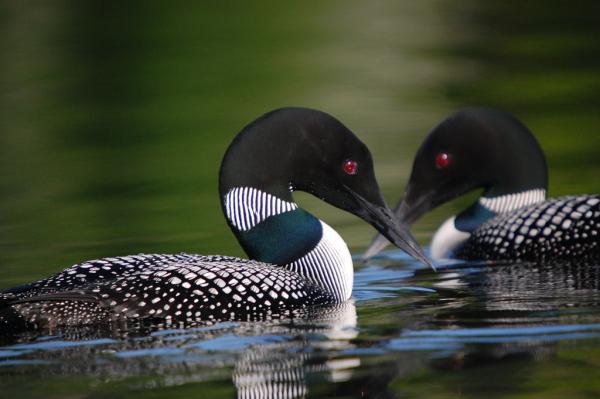2016 Harry Hann All-Camp Lecture in Ornithology
This presentation will follow a story line that begins just north of Pellston at the Seney National Wildlife Refuge in Michigan’s Upper Peninsula back in 1989. The discovery of how to reliably catch a loon opened up the ability to use the species as an important indicator of mercury in lake environments for determining ecological and human health assessments.
The study of loons and other wildlife as indicators over a 22 year period provided the knowledge platform for bringing the science of mercury in the environment to the global stage for an international mercury treaty. The United Nations Environment Programme facilitated the creation of the Minamata Convention on Mercury. Dr. David Evers was selected as a scientist to represent the United States at the convention and help participating delegates from 140+ countries better understand environmental patterns in fish, wildlife and people.
Dr. David Evers is an ecotoxicologist with 26 years’ field experience with contaminant monitoring research, especially those focused on mercury and oil spills. He is Executive Director, Founder and Chief Scientist of Biodiversity Research Institute (BRI). Evers has been on many international project teams through the United Nations Environment Programme, United Nations Industrial Development Organization, the International Council on Mercury as a Global Pollutant and conservation NGOs. He is a graduate of Michigan State Unviersity (B.S.), Western Michigan University (M.S.) and the University of Minnesota (Ph.D.).
This event is free and open to the public.
This presentation will follow a story line that begins just north of Pellston at the Seney National Wildlife Refuge in Michigan’s Upper Peninsula back in 1989. The discovery of how to reliably catch a loon opened up the ability to use the species as an important indicator of mercury in lake environments for determining ecological and human health assessments.
The study of loons and other wildlife as indicators over a 22 year period provided the knowledge platform for bringing the science of mercury in the environment to the global stage for an international mercury treaty. The United Nations Environment Programme facilitated the creation of the Minamata Convention on Mercury. Dr. David Evers was selected as a scientist to represent the United States at the convention and help participating delegates from 140+ countries better understand environmental patterns in fish, wildlife and people.
Dr. David Evers is an ecotoxicologist with 26 years’ field experience with contaminant monitoring research, especially those focused on mercury and oil spills. He is Executive Director, Founder and Chief Scientist of Biodiversity Research Institute (BRI). Evers has been on many international project teams through the United Nations Environment Programme, United Nations Industrial Development Organization, the International Council on Mercury as a Global Pollutant and conservation NGOs. He is a graduate of Michigan State Unviersity (B.S.), Western Michigan University (M.S.) and the University of Minnesota (Ph.D.).
This event is free and open to the public.
| Building: | Gates Lecture Hall, UM Biological Station |
|---|---|
| Event Type: | Lecture / Discussion |
| Tags: | Lecture |
| Source: | Happening @ Michigan from University of Michigan Biological Station |


